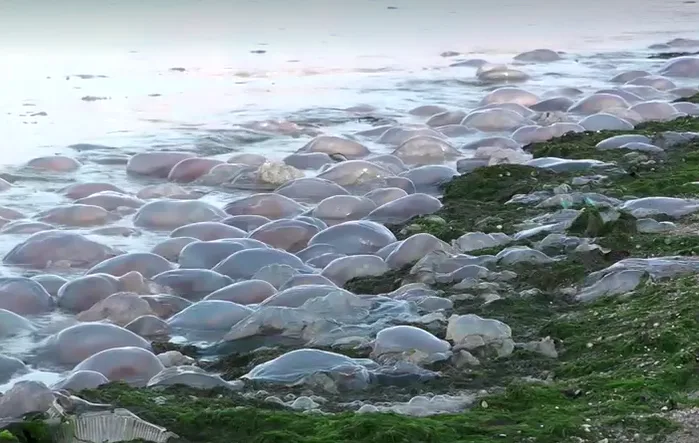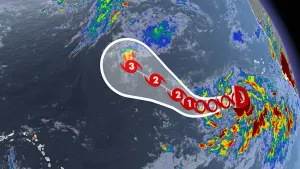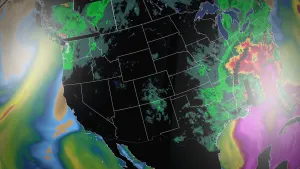
Thousands of jellyfish blanket beach after major storm
REUTERS - Thousands of jellyfish have washed up on popular beaches along Crimea's Azov Sea after a major storm, giving the shoreline a soft gleam.
The jellyfish washed ashore on Tuesday (November 26) were of the Aurelia aurita jellyfish, commonly known as 'moon jelly' and root-mouth jellyfish species.
Their on-shore appearance is bad for both beachgoers and the jellyfish themselves. Jellyfish start dying the moment they hit the beach and can still sting people if handled.
With the weather turning chilly, the tourist season in Crimea - a Black Sea peninsula Russia annexed from Ukraine in 2014 - is almost over and the beaches lie mostly empty.
This year locals said the Azov Sea was flooded with jellyfish, many hope another storm will carry the jellyfish back into the open sea.
Scientists from the Institute of Biology of the Southern Seas say the jellyfish invasion could be a result of environmental factors, such as an early spring and rising salinity levels of the Azov Sea.
"I believe, and I am confident this is what happened, that the huge number of jellyfish is a result of natural occurrence linked to the stormy weather. When a storm comes over the sea, jellyfish are washed ashore because they are passive and cannot move to the open sea."
(Production: Elena Ostrovskaya)









